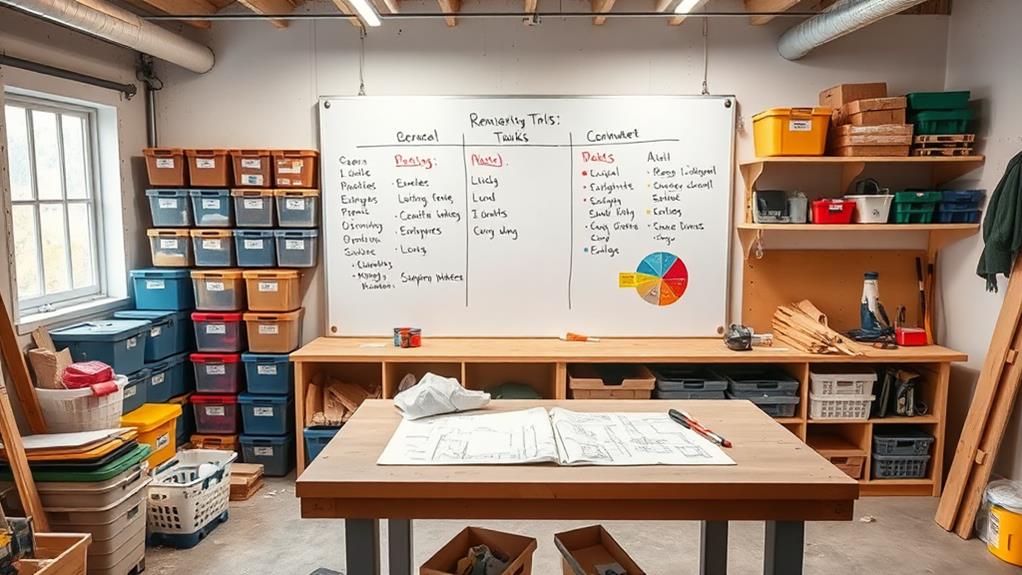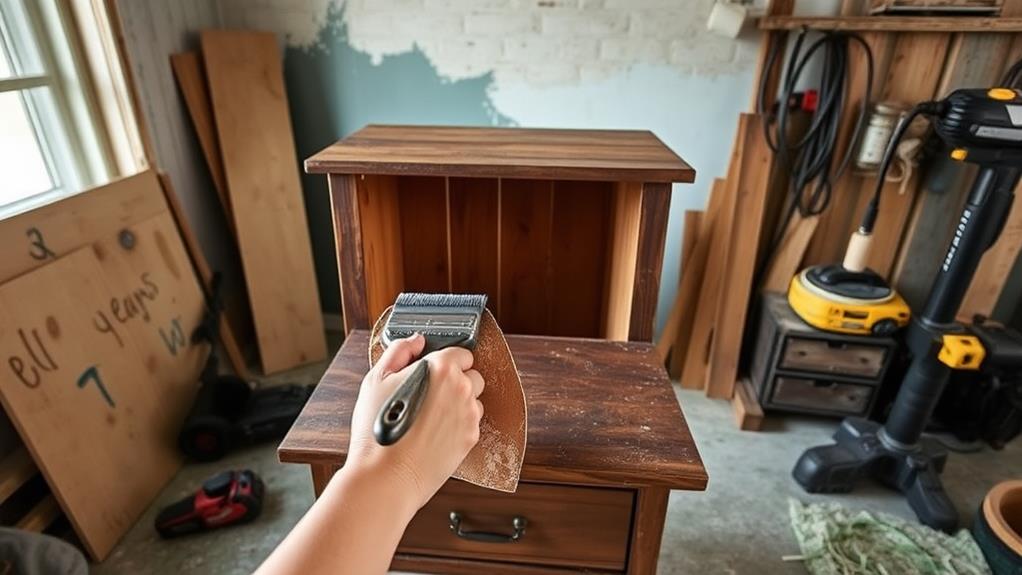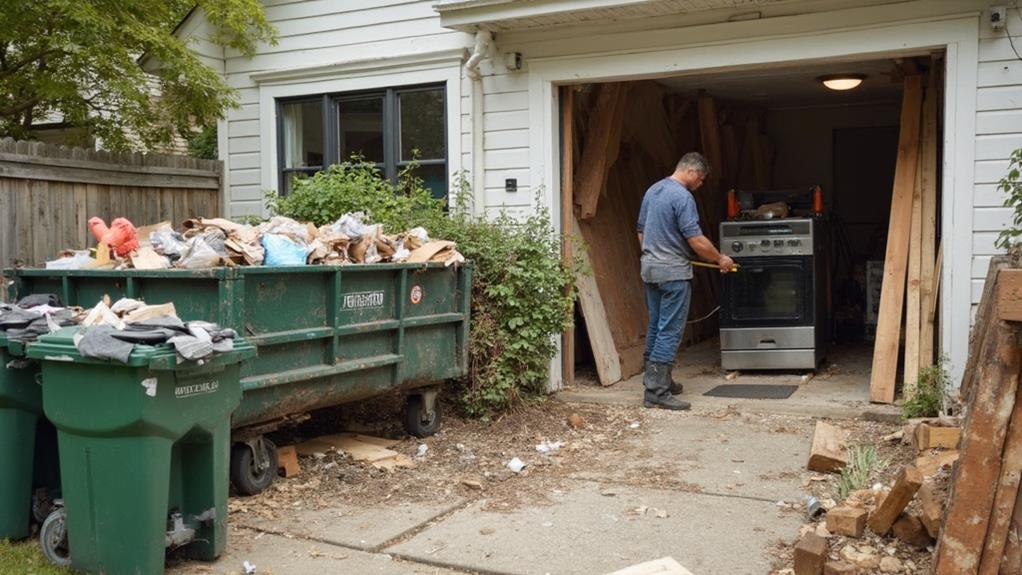Effective strategies for reducing waste and cutting costs in renovations involve careful planning and resourceful approaches. Start by creating a detailed budget and timeline, prioritizing essential tasks. Salvage and repurpose existing materials when possible, and opt for sustainable, energy-efficient alternatives. Rent or borrow tools instead of purchasing, and embrace DIY techniques for simpler tasks. Choose durable materials to minimize future waste and expenses. Implement waste reduction strategies like proper sorting and recycling. Consider cost recovery opportunities such as selling leftover materials or leveraging rebates for energy-efficient upgrades. These practices not only save money but also contribute to a more sustainable renovation process.
Plan and Prioritize

When embarking on a renovation project, careful planning and prioritization are essential to minimize waste and control costs. Begin by assessing your needs and determining which aspects of the renovation are most critical. Create a detailed budget that accounts for materials, labor, and potential unforeseen expenses. Research and compare prices from multiple suppliers to ensure you're getting the best value for your money.
Develop a comprehensive timeline for your renovation, breaking down the project into manageable phases. This approach allows you to focus on one area at a time, reducing the likelihood of costly mistakes and wasted materials. Consider the long-term impact of your choices, opting for durable, energy-efficient solutions that may have higher upfront costs but offer savings over time.
Prioritize tasks that address structural issues or safety concerns before moving on to cosmetic improvements. This strategy ensures that your budget is allocated to the most critical aspects of the renovation first. By carefully planning and prioritizing your renovation project, you can significantly reduce waste, minimize unexpected expenses, and achieve your desired results within budget.
Salvage and Repurpose
In the realm of renovation, salvaging and repurposing materials can significantly reduce waste and cut costs. This approach involves carefully removing and reusing existing elements from your home or sourcing second-hand materials from salvage yards, demolition sites, or online marketplaces. Common items that can be salvaged include doors, windows, fixtures, hardware, and even structural elements like beams or bricks.
Before demolition, conduct a thorough assessment of your space to identify potential salvageable items. Develop a plan for carefully removing and storing these materials to prevent damage. Consider repurposing items in creative ways; for example, old doors can become tabletops, and vintage fixtures can be restored for use in new locations.
When sourcing external materials, visit architectural salvage stores or connect with local contractors to find high-quality, discounted items. Salvaging and repurposing not only reduces landfill waste but can also add character and uniqueness to your renovation. It's important to balance the cost of labor for careful removal and restoration against the savings on new materials. Additionally, ensure that salvaged materials meet current building codes and safety standards before incorporation into your project.
Choose Sustainable Materials

Selecting sustainable materials for your renovation project offers three key benefits: reduced environmental impact, improved indoor air quality, and potential long-term cost savings. When choosing materials, prioritize those with low embodied energy, which refers to the total energy consumed in their production and transportation. Look for products made from renewable resources, such as bamboo flooring or recycled glass countertops, as well as those with high recycled content.
Consider using low-VOC (volatile organic compound) paints, adhesives, and finishes to minimize harmful emissions and improve indoor air quality. For insulation, opt for natural materials like cellulose or sheep's wool, which offer excellent thermal performance without the use of harmful chemicals. When selecting wood products, choose those certified by the Forest Stewardship Council (FSC) to ensure responsible forestry practices.
Durable materials, such as metal roofing or cement board siding, may have higher upfront costs but can provide long-term savings through reduced maintenance and replacement needs. Additionally, energy-efficient windows and doors can help lower utility bills over time. By carefully selecting sustainable materials, you can create a healthier living environment while minimizing your renovation's environmental impact and potentially reducing long-term expenses.
Rent or Borrow Tools
Savvy renovators recognize the value of renting or borrowing tools rather than purchasing them outright. This approach not only reduces upfront costs but also minimizes storage requirements and maintenance responsibilities. Many home improvement projects require specialized tools that may only be used once or twice, making rental a cost-effective solution.
Local tool libraries and community sharing programs offer excellent opportunities to access a wide range of equipment without the need for ownership. These resources often provide expert advice and proper usage instructions, ensuring safe and efficient tool operation. For larger or more complex renovations, consider renting from professional equipment rental companies. They typically offer well-maintained, high-quality tools that can significantly improve work efficiency and results.
When deciding whether to rent or borrow, evaluate the project's duration, frequency of tool use, and your long-term renovation plans. For tools you anticipate using frequently, purchasing may be more economical. However, for occasional use or specialized equipment, renting or borrowing remains the most practical choice. By carefully assessing your needs and exploring available options, you can optimize your renovation budget while reducing waste and unnecessary purchases.
Embrace DIY Techniques

Three key benefits of embracing DIY techniques in renovations are cost savings, waste reduction, and personal satisfaction. By taking on tasks yourself, you eliminate labor costs and have more control over material usage, potentially reducing waste. DIY projects also allow for a deeper connection to your home and a sense of accomplishment.
Start with simpler tasks like painting, tiling, or installing fixtures. These projects require minimal specialized skills and can significantly impact your renovation's overall look and cost. For more complex tasks, consider online tutorials, workshops, or guidance from experienced friends or family members. Upcycling and repurposing materials are excellent DIY strategies that reduce waste and costs while adding unique character to your space.
However, it's crucial to recognize your limitations. Electrical work, plumbing, and structural changes often require professional expertise for safety and legal reasons. Assess each task realistically, considering the time, tools, and skills required. Remember that mistakes in DIY projects can lead to costly repairs, potentially negating any initial savings. Balance your DIY aspirations with practical considerations to ensure a successful, cost-effective, and waste-reducing renovation.
Recycle and Donate Leftovers
Effective management of leftover materials is crucial for reducing waste and potentially offsetting costs during renovations. By implementing recycling and donation strategies, homeowners can minimize environmental impact while potentially recouping some expenses.
Recycling construction materials like wood, metal, and plastics can significantly reduce landfill waste. Many recycling centers accept these materials, often at no cost. Some even offer compensation for certain recyclables, providing a small financial benefit.
Additionally, salvaging reusable items such as fixtures, appliances, or hardware can be both eco-friendly and cost-effective.
Donating usable materials to local charities or organizations like Habitat for Humanity ReStore can provide tax deductions while supporting community initiatives. These organizations often accept various building materials, from lumber to windows and doors. Some may even offer pickup services for larger donations.
For specialized items, consider listing them on online marketplaces or local buy-nothing groups. This approach not only reduces waste but can also help recover some renovation costs. By carefully sorting and managing leftover materials, homeowners can contribute to sustainability efforts while potentially offsetting renovation expenses through recycling, donations, and resale opportunities.
Frequently Asked Questions
How Can I Find Reliable Contractors Who Specialize in Eco-Friendly Renovations?
To find reliable eco-friendly renovation contractors, research online directories, seek recommendations from green building associations, check for relevant certifications, and read customer reviews. Interview potential contractors, asking about their sustainable practices and experience with eco-friendly materials and techniques.
What Are the Potential Tax Incentives for Implementing Sustainable Renovation Practices?
Like a breath of fresh air for your wallet, tax incentives for sustainable renovations can be substantial. These may include credits for energy-efficient improvements, renewable energy installations, and water conservation measures, depending on your location and specific project details.
How Do I Properly Dispose of Hazardous Materials During a Renovation Project?
Proper disposal of hazardous materials during renovation requires identifying and segregating items, contacting local waste management facilities, following regulations, and using certified disposal services. Safety equipment and proper containment are essential when handling these materials.
Are There Any Energy-Efficient Upgrades That Offer the Best Return on Investment?
Energy-efficient upgrades with excellent ROI include LED lighting, programmable thermostats, high-efficiency HVAC systems, and improved insulation. These investments can significantly reduce energy consumption, lower utility bills, and increase property value over time, making them worthwhile considerations for homeowners.
What Permits Are Typically Required for Eco-Friendly Home Renovations?
Like navigating a labyrinth, obtaining permits for eco-friendly renovations can be complex. Typically, you'll need building permits for structural changes, electrical and plumbing permits for system upgrades, and possibly special permits for solar installations or greywater systems.
Conclusion
Implementing these strategies can significantly reduce waste and costs during renovations while promoting environmental sustainability. Careful planning, creative repurposing, and thoughtful material selection form the foundation of an efficient project. As the adage goes, "One man's trash is another man's treasure," and this principle applies well to renovation waste management. By embracing DIY techniques, utilizing borrowed tools, and recycling leftover materials, renovators can minimize their ecological footprint and maximize their budget, ultimately achieving a more sustainable and cost-effective renovation process.

